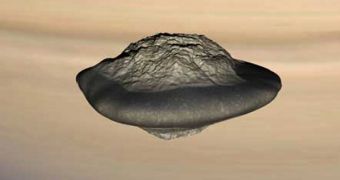Saturn is surrounded by a host of moons, some of them large and very interesting, and others arguably less so. But the gas giant also features some very weird moonlets, cosmic objects that are too small to merit any additional investigation, but which exist around the planet nonetheless. In a groundbreaking new study on five of these small, peculiar moons, astronomers determined that they were not formed when Saturn first appeared, and also that their formation process had nothing to do with the one that the other, larger moons followed.
In other words, the researchers behind the new work say, it would appear that these weird bodies developed from the rings that currently surround the planet. These structures are terribly thin, averaging at several tens of meters, but they spread over incredible distances, and so it could be that clumping of material inside them led to the formation of the moonlets. Natural satellites such as Titan formed right alongside the gas giant. Experts place the age of such moons at about 4.5 billion years, and say that the largest bodies in the Saturnine system formed all at once.
However, this is not the case for the rings, as well as for the minute moonlets. “There are still new objects forming in the solar system today. We used to think everything was formed four, five billion years ago, but no! New objects are still forming today,” explains expert Sebastien Charnoz, who is a planetary scientist at the Universite Paris Diderot, in France. Recent data collected by the NASA Cassini spacecraft shows that these five small moons have actually formed no more than 10 million years ago, which is the blink of an eye in geological terms.
“The rings and the moonlets are in fact a single system. They appear different but they are simply the different portions of a same system. The moonlets are born from the rings, and they transform the ring in return through gravitational interaction. This tells us that there are different ways to form solar system bodies. It tells us also that giant planets' environment are much more dynamic than previously thought and that we have still a lot of things to learn,” the expert adds quoted by Space.
“This is theoretical support for the growing view about how there's an intimate connection between disks and embedded bodies. These satellites might have been born recently, meaning that the system is evolving in some sense right before our eyes, although one would have to stay alive for some time to see real change,” explains Cornell University professor Joseph Burns, who is also a planetary scientist. The investigator was not involved in the new study.

 14 DAY TRIAL //
14 DAY TRIAL //